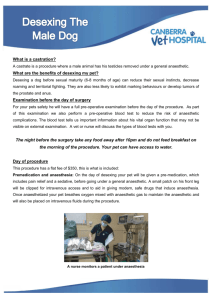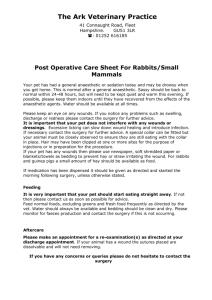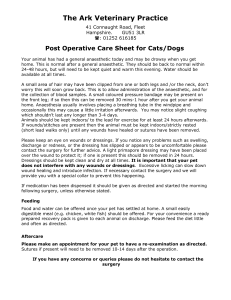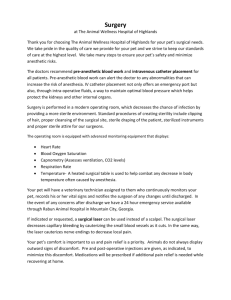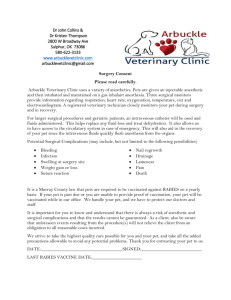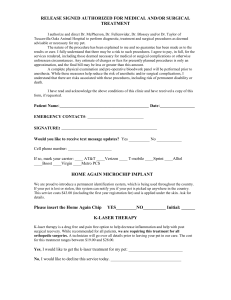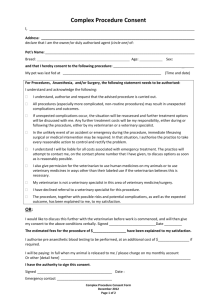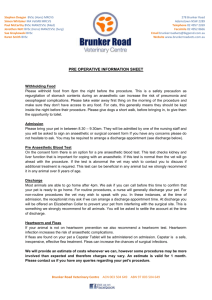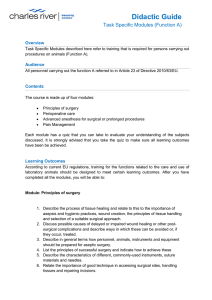- Canberra Veterinary Hospital
advertisement
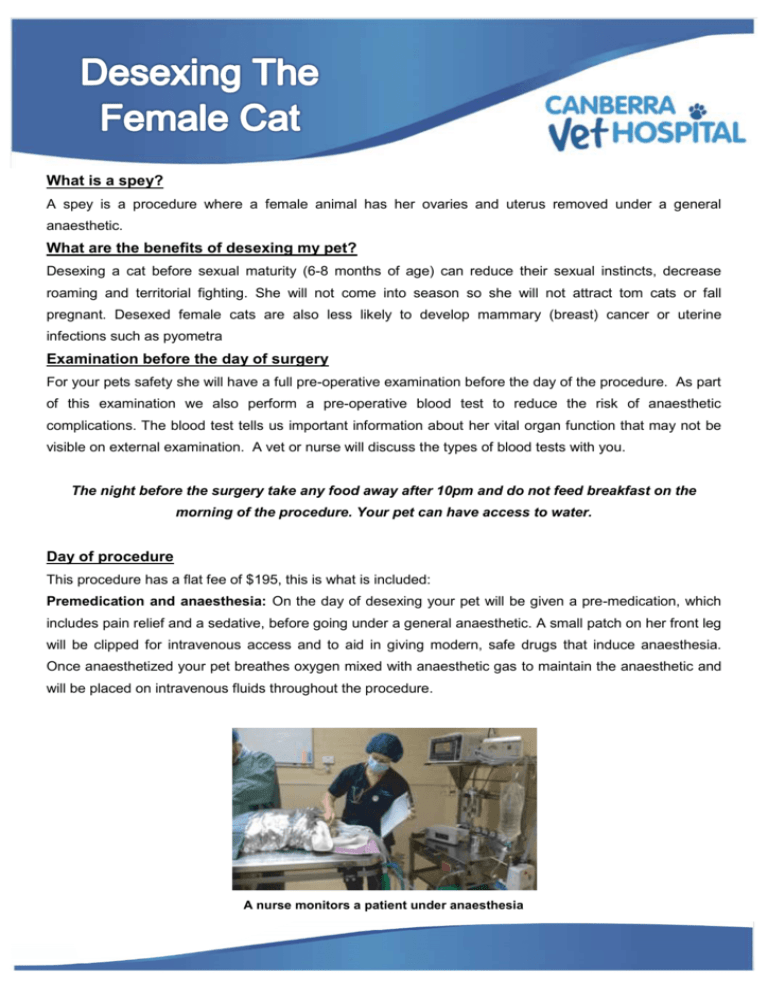
What is a spey? A spey is a procedure where a female animal has her ovaries and uterus removed under a general anaesthetic. What are the benefits of desexing my pet? Desexing a cat before sexual maturity (6-8 months of age) can reduce their sexual instincts, decrease roaming and territorial fighting. She will not come into season so she will not attract tom cats or fall pregnant. Desexed female cats are also less likely to develop mammary (breast) cancer or uterine infections such as pyometra Examination before the day of surgery For your pets safety she will have a full pre-operative examination before the day of the procedure. As part of this examination we also perform a pre-operative blood test to reduce the risk of anaesthetic complications. The blood test tells us important information about her vital organ function that may not be visible on external examination. A vet or nurse will discuss the types of blood tests with you. The night before the surgery take any food away after 10pm and do not feed breakfast on the morning of the procedure. Your pet can have access to water. Day of procedure This procedure has a flat fee of $195, this is what is included: Premedication and anaesthesia: On the day of desexing your pet will be given a pre-medication, which includes pain relief and a sedative, before going under a general anaesthetic. A small patch on her front leg will be clipped for intravenous access and to aid in giving modern, safe drugs that induce anaesthesia. Once anaesthetized your pet breathes oxygen mixed with anaesthetic gas to maintain the anaesthetic and will be placed on intravenous fluids throughout the procedure. A nurse monitors a patient under anaesthesia Nursing care: Throughout the general anaesthetic a trained and qualified nurse will continuously monitor her vital signs including her heart rate, temperature and oxygenation. Surgery and theatre: Her abdomen will be clipped to ensure the surgical sight is kept clean and sterile. All surgical procedures are undertaken in a surgical theater with individual sterilized surgical packs for each patient. The veterinary surgeon wears a cap and mask as well as sterile gloves and gowns. An incision will be made on the underside of her abdomen to remove the uterus and ovaries; absorbable sutures are used under the skin to close the incision and in some cases a few external sutures may be placed if needed. A tattoo will be placed in her left ear as a permanent record of desexing and to meet ACT legislation. The surgeon and nurse wear caps, masks, gowns and gloves to keep everything sterile Medication: An additional pain relief injection will be administered prior to waking up to ensure a smooth and comfortable recovery from surgery. This pain relief will last for the next 24 hours and your cat will need medication at home. A vet or nurse will discuss this medication with you at the time of discharge. After the surgery On discharge you will be given a handout explaining how to care for your pet. A vet or nurse will also discuss this with you including keeping your pet warm, comfortable, medication, how to manage the wound and things to watch out for such as vomiting, swelling or infection. We need to check your cat 3-5 days after the procedure to ensure the surgical site is healing properly, not infected or overly inflamed. This consultation is fee of charge. If your pet licks at the wound she will need a plastic cone called an e-collar which prevents this licking.
